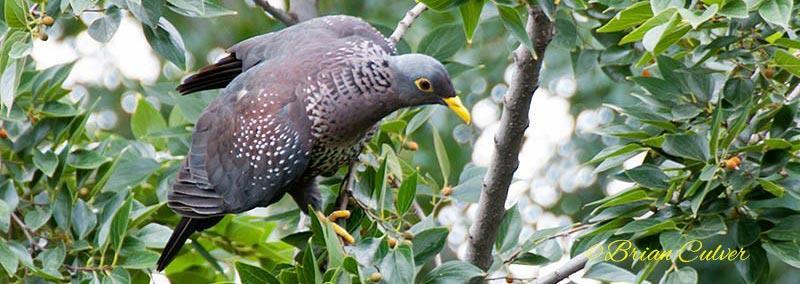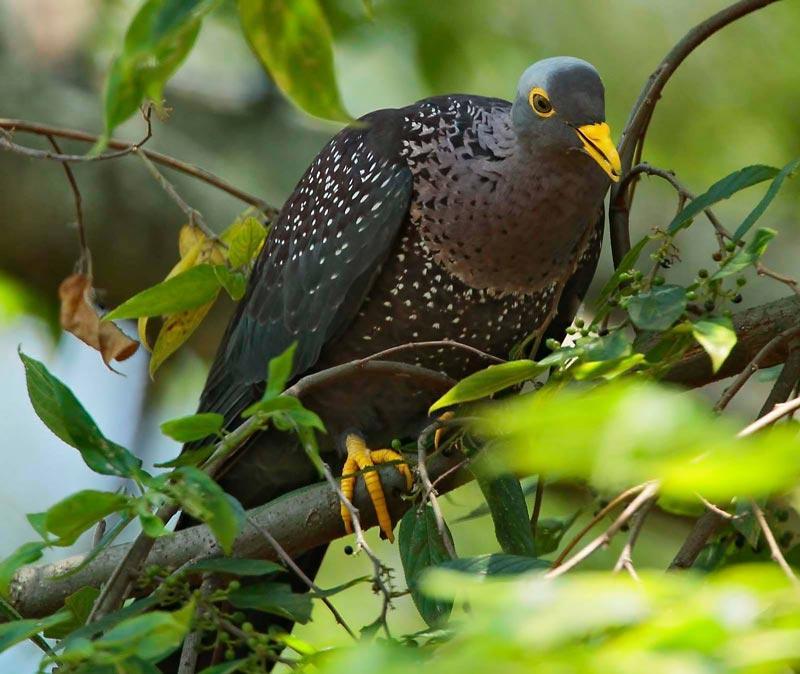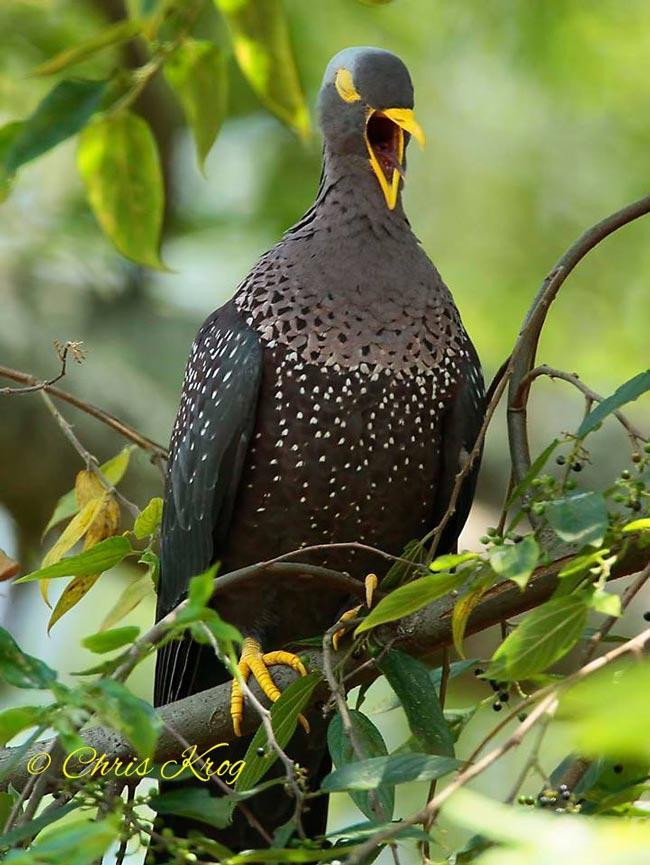Whale Watching in Hermanus
Hermanus is regarded as the whale watching capital of South Africa. By Land - By Boat - By Air
Hermanus is regarded as the whale watching capital of South Africa. By Land - By Boat - By Air
The Old Harbour Open-Air Museum is a provincial heritage site. It is unique in that apparently it is one of only two fishing harbours in the world that has been conserved in tact.
meanders for almost 11 kilometres along the coast from the New Harbour in the west to the estuary at the mouth of the Klein River in the east.
Botanical Name: Columba arquatrix
Afrikaans name: Geelbekbosduif
The African olive or Rameron is a large pigeon with conspicuous yellow eye-patch - legs and feet, about the size of a European wood pigeon or a francolin (or Spurfowl). It is dark purplish-grey spotted with white - has a grey crown and blackish tail. They are somewhat nomadic seasonally - depending on fruiting of trees. Seen in the picnic area of Fernkloof NatureReserve and also at the specimen hut at Fernkloof Nature Reserve. Uncommon resident.

The adult male African olive pigeon is a large pigeon at 37 to 42 cm in length and a weight of 300 to 450 g. Its back and wings are maroon, with the shoulders heavily speckled with white spots. The underparts are maroon with heavy white spotting, and the head is grey with yellow patches around the eye, and a yellow bill. The neck plumage, used in display, is streaked maroon and white, the underwing and undertail are dark grey, and the feet are yellow.
Females are very similar but somewhat duller. Juvenile birds have the maroon and grey replaced with dark brown, the bare parts are a dull greenish-yellow, and the wing feathers have pale fringes. In flight, this pigeon looks very dark. Its flight is quick, with the regular beats and an occasional sharp flick of the wings which are characteristic of pigeons in general.
This is a species of cool, moist forest canopies above 1,400 m altitude, although it occurs locally as low as 700 m. It will also use riverine forests and thickets, mountain fynbos, second growth and clearings, some alien tree plantations, urban gardens and parks, and feed on agricultural land when not persecuted. Outside the breeding season, the Rameron Pigeon tends to move from the evergreen montane forests to lowland forests. It is often seen in fruit trees or bushes, which are its main source of food.
The African olive-pigeon is a resident breeding bird in much of eastern and southern Africa from Ethiopia to the Cape. Populations also are found in western Angola, southwestern Saudi Arabia and northern Yemen. It is locally common, although sizeable gaps in its distribution occur due to its habitat requirements.

The African olive pigeon feeds on fruit and berries, mainly picked in the canopy, but it will also descend for fallen fruit and take some insects and caterpillars. In the south of its range, it favours the fruit of a highly invasive plant, the bugweed, Solanum mauritianum. Birds fly considerable distances from their roosts to feeding areas, and young or nonbreeding birds form flocks.
Geophagy has been observed in this species.

The African olive pigeon builds a large stick nest up to 15 m high in a tree and lays one (rarely two) white eggs. The eggs are incubated for 17–20 days to hatching, and the chicks fledge in another 20 days.
The male has a display consisting of deep bows, and a display flight which consists of a climb, wing clapping, and slow glide down.
Rameron pigeons form flocks and roost communally when not breeding, perching high in trees. They are somewhat nomadic seasonally, depending on fruiting of trees and will fly considerable distances from their roosts to feeding areas. They have a quick flight, with the regular beats and an occasional sharp flick of the wings which are characteristic of pigeons in general. They enjoy bathing and sand-bathing and should be provided with opportunities to do so when kept in captivity.
The call is a loud coo coo.
Not threatened, but might be at risk due to destruction and fragmentation of forests
Text:
Photos courtesy:
Call us and schedule your listing today! Contact Us
in and around Hermanus
With countless Southern Right Whales gathering along the Whale coast every year to mate and to calve
One for the Bucket list
Experience the exceptional and come face to face with a great white shark! Gansbaai also known as Shark Alley…
4 x Wine Routes
Hermanus is surrounded by 4 Wine routes, the Hermanus - (Hemel-and-Aarde); Stanford -, Elim - and Botriver Wine Route
![]()
in the Cape whale Coast
Hermanus is a spectacular seaside town with winding cliff paths, sloping green mountains, and deep blue waters.
Copyright © 2025 Hermanus Online Magazine. Web Development by Jaydee media.